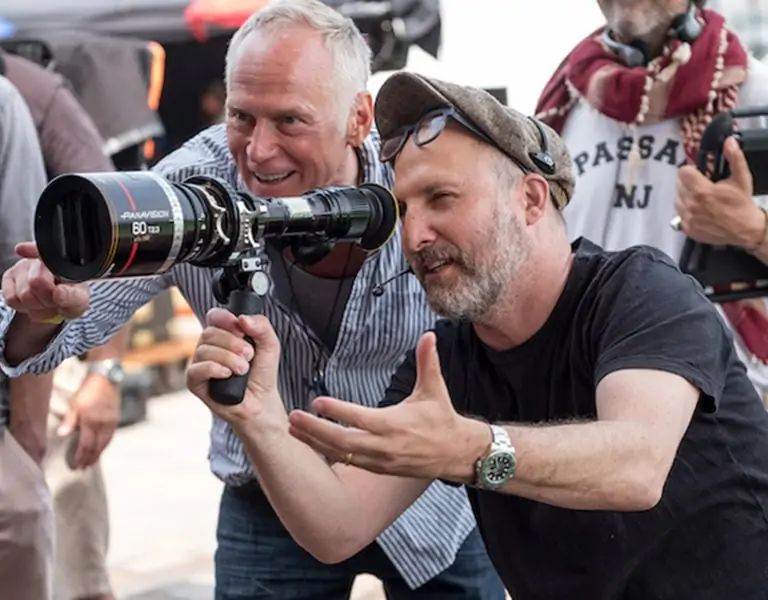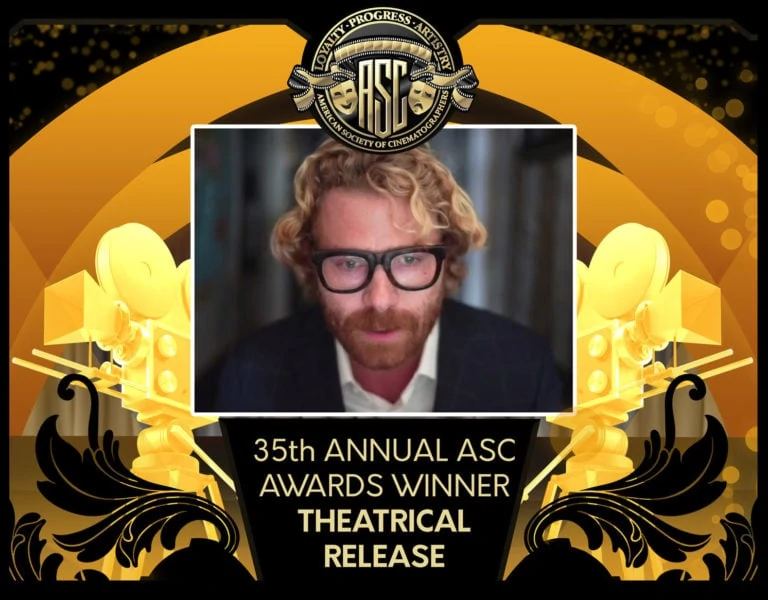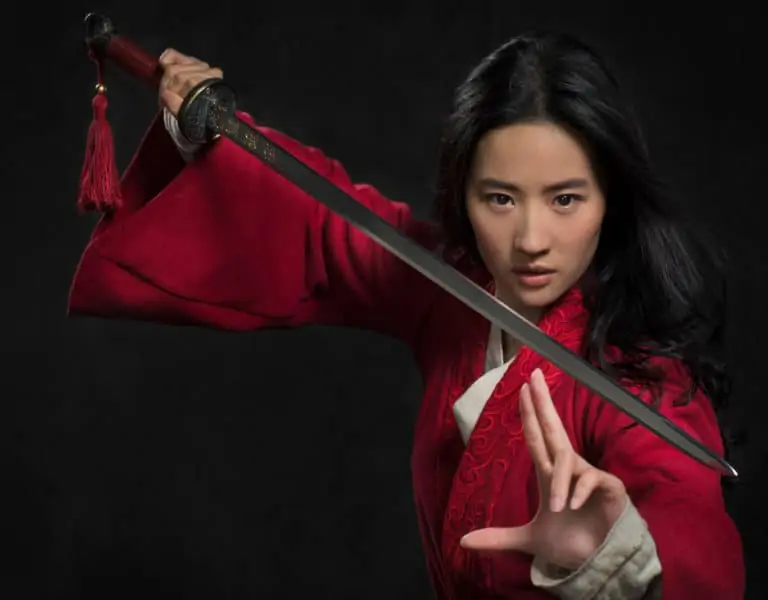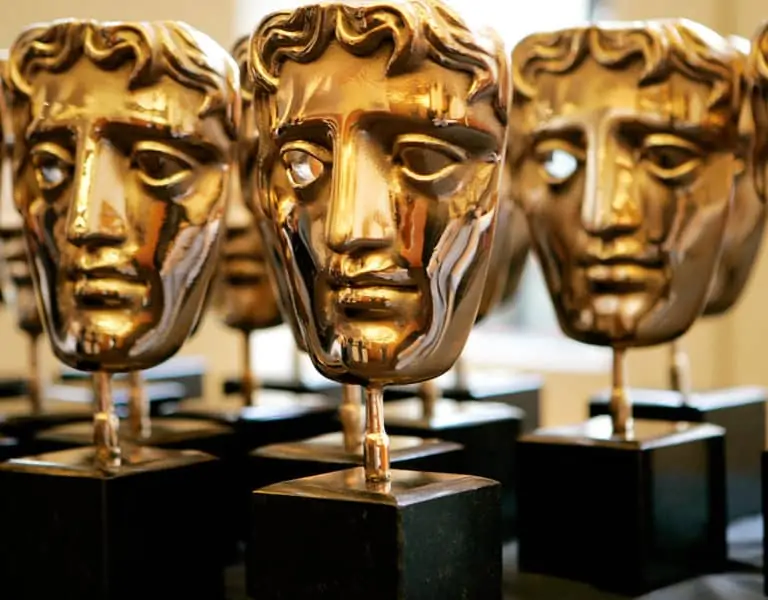Robot Wars
Kramer Morgenthau ASC / Terminator Genisys
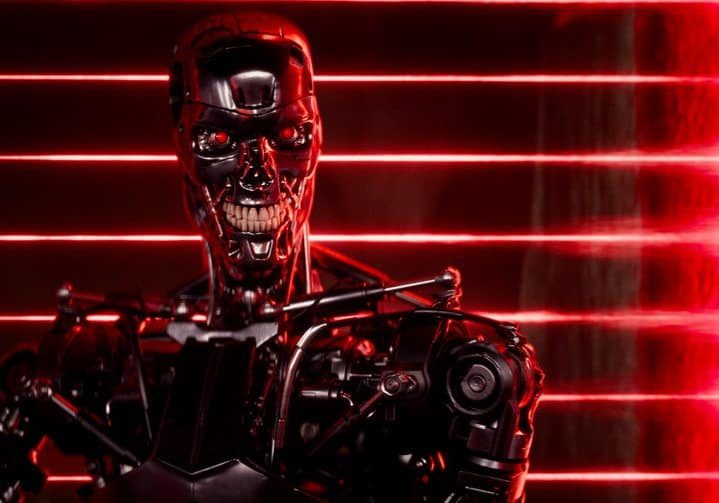
Robot Wars
Kramer Morgenthau ASC / Terminator Genisys
BY: Ron Prince
He said he’d be back! One of the biggest names in show business, Arnold Schwarzenegger, reprises his all-action role as the eponymous robot character in Paramount’s $175m-plus sci-fi action feature Terminator Genisys.
When John Connor (Jason Clarke), leader of the human resistance against Skynet, sends Kyle Reese (Jai Courtney) from 2029 to 1984 to protect his mother, Sarah (Emilia Clarke), from a Terminator assassin, an unexpected turn of events creates an altered timeline. Instead of a scared waitress, Sarah is a skilled fighter with a Terminator guardian (Schwarzenegger) by her side. Faced with unlikely allies and dangerous new enemies, Reese sets out on an unexpected new mission: to reset the future.
Whilst the new movie is the fifth installment in the Terminator series, it acts as more of a sequel to first two blockbusters – The Terminator (1984) and Terminator 2: Judgment Day (1991) – both directed by James Cameron. Indeed, Paramount announced in 2014 that Terminator Genisys would be the first of a new stand-alone trilogy, with two sequels scheduled for 2017 and 2018, and Cameron recently gave the new movie his official blessing.
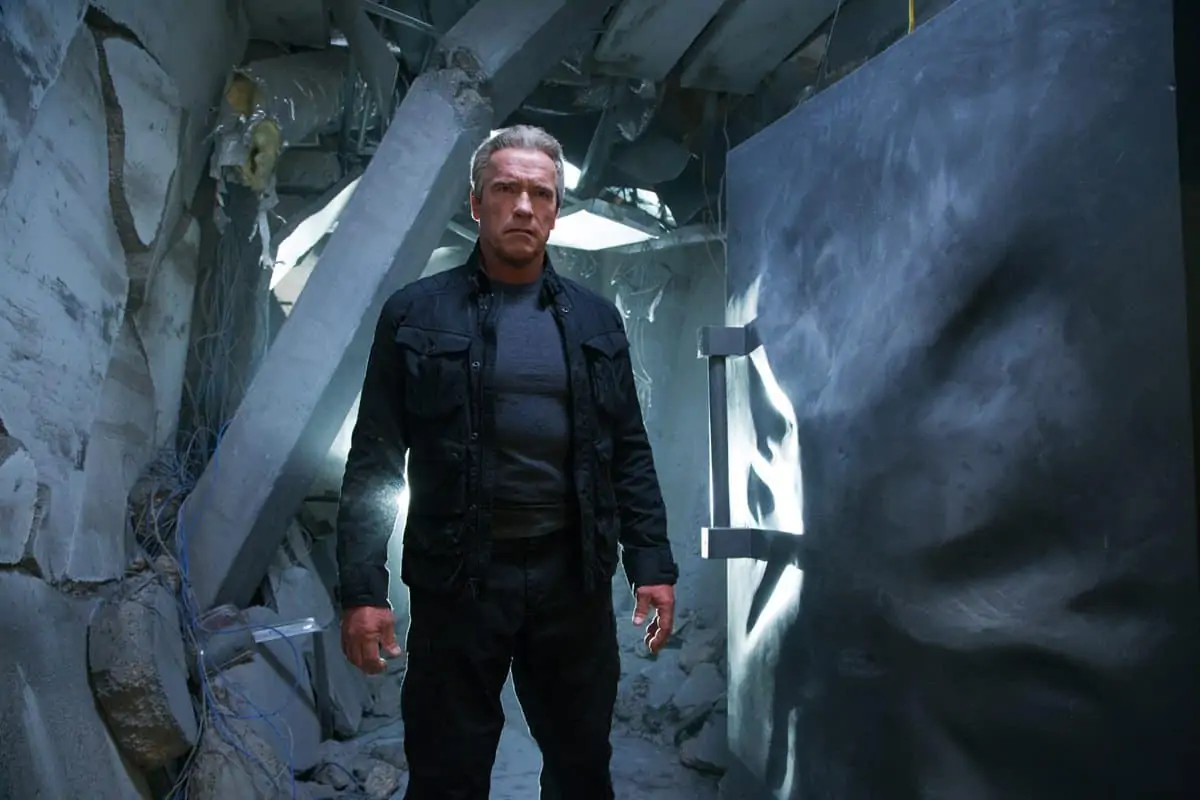
With direction by Alan Taylor, principal photography on Terminator Genisys began on April 21, 2014 in New Orleans, under the auspices of Kramer Morgenthau ASC, concluding in early August in San Francisco. Morgenthau, who has collaborated with Taylor on Thor: The Dark World (2013), HBO’s Game Of Thrones, as well as numerous commercials, is also known for his cinematographic work on Chef (2014), Fracture (2007) plus Sky’s Boardwalk Empire.
Finding himself a regular on VFX-laden productions, Morgenthau is a self-avowed “futurist”, one who believes cinematography is a constantly evolving art form that has to keep up with rapidly changing technology, whilst also keeping a grasp on the basics.
“We may shoot movies by the click of a mouse in the future, “ he says, “but in the end the fundamentals of cinematography will remain the same. It will always be telling stories with light, as it was when the cave paintings came into existence or the Mughals made miniature paintings.”
In addition to opening in regular cinemas, Terminator Genisys will also be shown in 3D, Real 3D and IMAX 3D. British Cinematographer Magazine editor Ron Prince caught up with Morgenthau at his home in Los Angeles, via Skype, to discover more about his work.
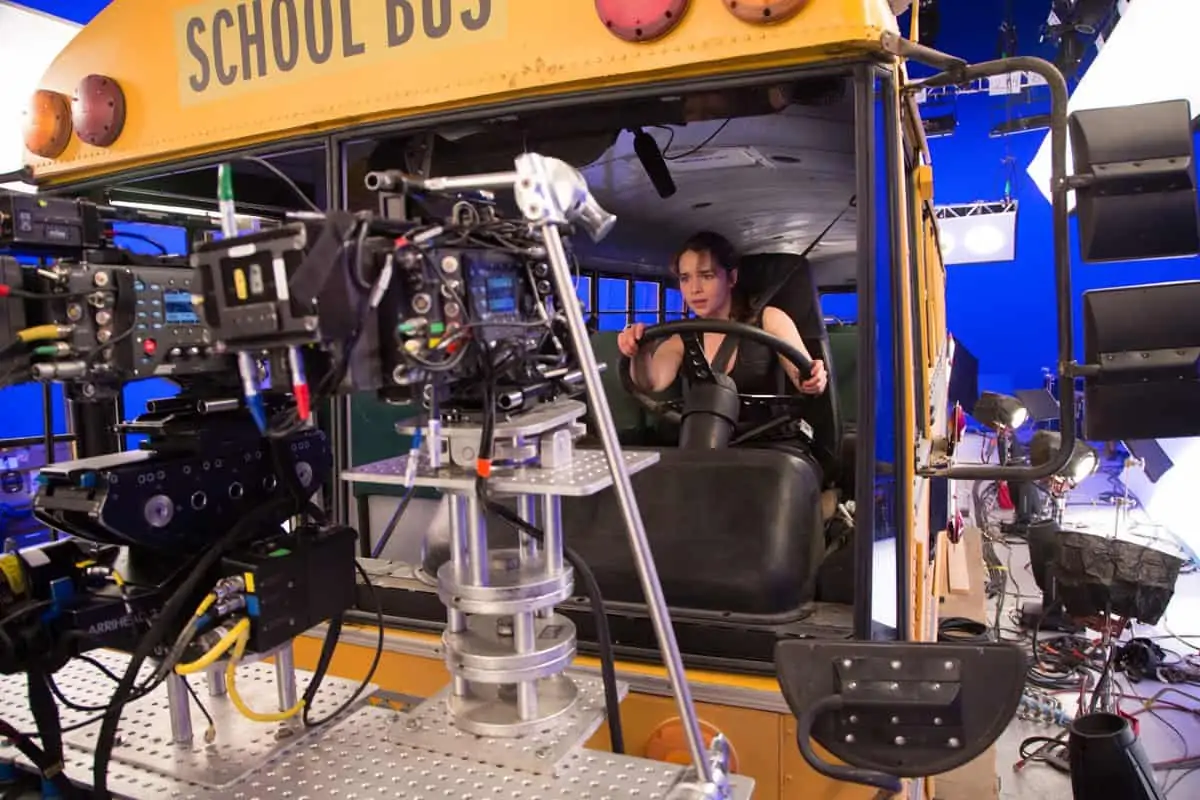
What led to your involvement in shooting Terminator Genisys?
KM: I was hired by Alan, the director, as we have worked together on several productions over the last few years – most notably Thor 2 in London, and Game Of Thrones in Northern Ireland. I was attracted to the production partly because it gave me the chance to continue my creative moviemaking relationship with Alan, and partly because the chance to work on a Terminator film was a dream come true. As a kid you see an iconic piece of pop culture at the cinema, and never imagine you might be involved in it. But then 30 years later you get the opportunity to work on it in a major way. Science-fiction-fantasy, mixed with apocalyptic film noir, is very enticing to me. So there was no convincing necessary – I was super-excited to work on it.
What were your initial discussions with Alan about the movie? And what did you want to bring to the look of this new episode in the franchise?
KM: We definitely wanted to honour the first two films – The Terminator and Terminator 2: Judgment Day – both shot by Adam Greenberg ASC. Today’s market is inundated with apocalyptic sci-fi movies, but these were creative and technological trailblazers in their day, that stand the test of time. The first movie has a compelling, edgy, low-budget, sci-fi, film noir atmosphere, whilst the second is a bright and shiny blockbuster that had groundbreaking, never-been-seen-before VFX sequences. We wanted to include some of the visual vocabulary from both of these movies, but although we recreated – almost scene-by-scene – a flashback from The Terminator, we did not want to be slaves to the original movies. There is a new twist to the story of Terminator Genisys, so we have introduced a contemporary look.
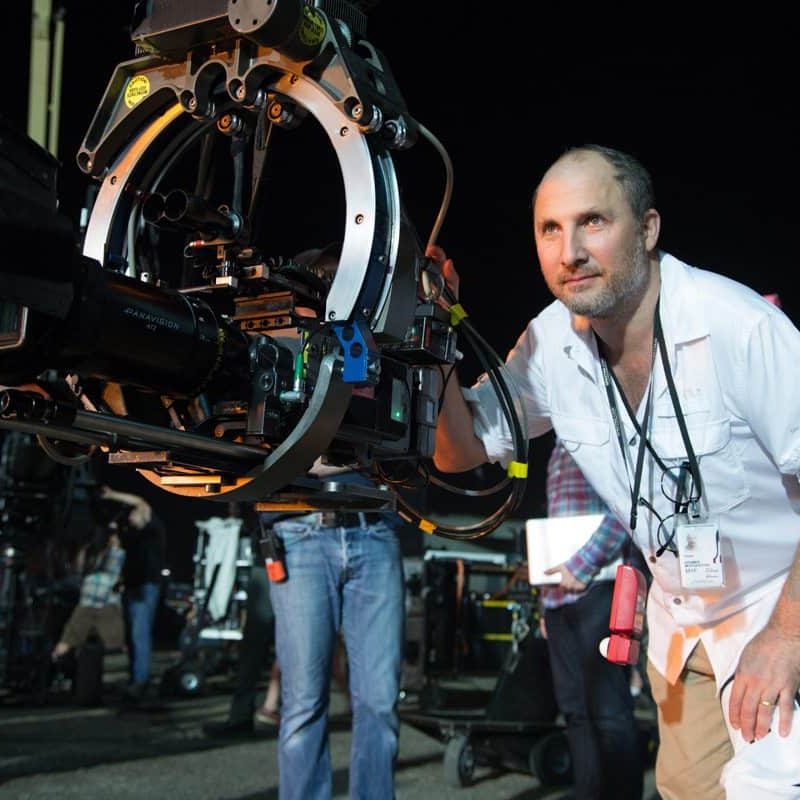
"Alan and I felt that 2.40:1 Anamorphic would bring a certain cinematic majesty to the production, and help to move the franchise along visually."
- Kramer Morgenthau ASC
What were your creative references?
KM: Obviously The Terminator and Terminator 2: Judgment Day were important references for us and it’s a wonderful honour, and somewhat of a relief, to have James Cameron’s endorsement for the new movie. We were always aware that we were walking in big footsteps, and it’s good to feel that we have lived up to those landmark standards.
We also referenced other iconic sci-fi films. Blade Runner (1982, DP Jordan Cronenweth ASC) and 2001: A Space Odyssey (1968, Geoffrey Unsworth BSC) are the high watermarks for timeless works. The retro-futuristic production design and film-noir-influenced cinematography of Blade Runner, under Ridley Scott’s direction, still feel modern, crisp and expressive. The simple man-versus-machine storyline of 2001, featuring great sets and image composition, are inspirational too when you are swimming in similar cinematographic waters.
Was there a debate about shooting film versus digital?
KM: At the start we were interested in shooting celluloid for the flashback to 1984 sequence but, as Terminator Genisys is a majorly VFX-driven picture, with many different cameras and units, digital felt like the right medium to establish a simple, convenient workflow into post production. I knew the Anamorphic lenses that I had in mind – primarily Panavision C-series – would soften the image and bring some soul, imperfections and painterly qualities to the clinical harshness of the digital image. Furthermore, I’d like to think that James Cameron would have chosen digital in 1984 if it had been available to him back then.
So which cameras did you select?
KM: You can get good images from most digital cameras today but, for me, the ARRI Alexa is the best. The Alexa XT was my first choice on Terminator Genisys. It’s easy to work with, delivers incredibly good-looking images with great dynamic range, and comes with the widely-accepted Codex ARRIRAW workflow in-built. So that was a no brainer. Along with the Alexa XTs, we also used GoPros, Canon 5Ds and Cable Cams for some of the action/stunt scenes, such as the bus chase/crash sequence. Some digital cameras cannot handle g-forces or heavy impacts, and just shut down. So I deployed film cameras on second units when I knew the going would be tough. Our camera and lens package came from Panavision in Woodland Hills.

Tell us about your choice of aspect ratio and lenses?
KM: Regarding the aspect ratio, Alan and I felt that 2.40:1 Anamorphic would bring a certain cinematic majesty to the production, and help to move the franchise along visually. Neither of the two early movies had shot cinemascope – The Terminator shot 1.85:1 Super 35, while Terminator 2 2.35:1 Super 35.
On a big movie like this, you assemble a large inventory of different lenses for the many different cameras being used on principal and unit photography. My preference was to base the look around the C-series Anamorphics. They are more gentle than the G-series, while the Primos are super-sharp. We had some E-series lenses – 135mm and 180mm – which have older Nikon glass in them and look quite nice.
However, the C-series have all kinds of Frankenstein properties to them, and one 40mm can look different to the next. So, long before production began, I spent time with Panavision’s lens guru, Dan Sasaki, to test, modify and finesse each lens. I also wanted them optimised for shooting at the fastest-possible stop, to get decent resolution and close focus. While Dan optimised them for T2.8, on-set they looked better at T2.8½ or T4.
My favourite lenses were the 40mm and 75mm for close-ups. They flare nicely, and the glass has an attractive, rounded softness and painterliness with slightly lifted contrast. It’s almost like having a diffusion filter built into the lens. I did not use diffusion at all on this movie, and rarely use it anyway these days. I find the diffusion filters for film lack subtlety when used with digital. So I prefer to use softer glass and add diffusion during the DI – where you have selective control over diffusing image areas such as highlights, blacks and skin tones.
How about your lighting choices?
KM: We got most of the lights from Paramount’s in-house lighting division, and used a combination of large, traditional Tungsten sources and modern LED lamps – a huge amount of both. Plus we used a wide variety of moving/interactive lights, with everything wired back to dimmer boards. I worked closely with production designer Neil Spisak and Jay Hart, the set decorator, to integrate the LEDs and their associated circuitry into various sets, like the Time Displacement Device chamber. Some scenes – such as the shoot-’em-up sequence in the giant server maze at the data centre – was lit by just by shimmering blue and daylight-balanced LEDs in the set. Echoing the original movie, the department store sequence was lit very sparsely with fluorescent practicals, out-of-focus LEDs, and an 18K HMI through the window. Visually, these are all pretty interesting sequences and am very happy with the on-screen results. One aspect of the lighting was that we worked very closely with the VFX team on how the on-set lighting would extend naturally into the universe of their work.
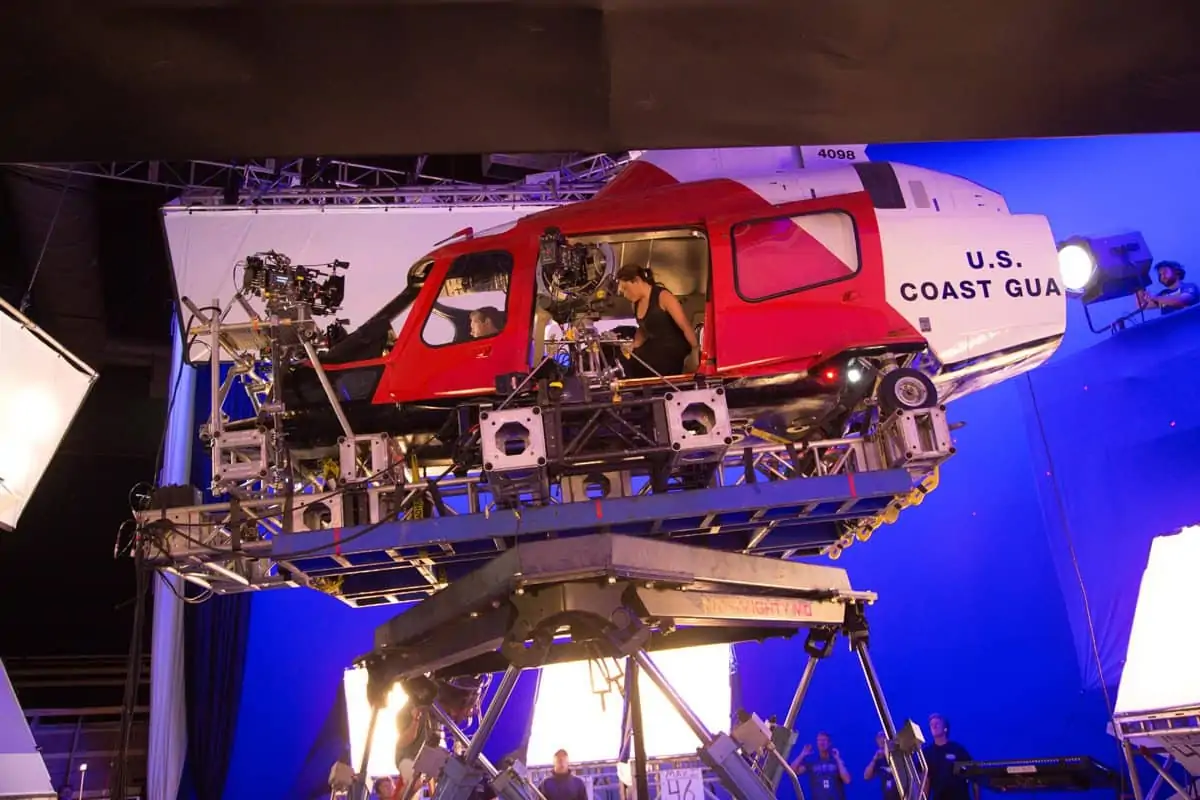
Tell us about the studios and locations?
KM: New Orleans does not have regular studios per se. We shot in a couple of gargantuan air-conditioned buildings, that were formerly used by NASA to construct rocket boosters for the Space Shuttle, and built multiple sets there. We shot in a large, empty Lowes hardware store and at an abandoned power plant for the 1984 sequence, and captured the future prison/war camp scenes at the Port Of Orleans. The streets of downtown New Orleans played for 1980’s Los Angeles – which worked out well, as LA does not resemble the 1980s these days, whereas New Orleans has stuck in time and looks great visually. We also shot exteriors in San Francisco and finished the shoot there, around the Golden Gate Bridge and the highlands overlooking the bridge, where the spectacular school bus chase and crash stunt takes place. However, as it’s next to impossible to shoot on Golden Gate Bridge, let alone do any stunts, we constructed a 500ft section of the bridge’s tarmac and railings against greenscreen in a giant parking lot in New Orleans, and flipped over a couple of school busses for that sequence, which the VFX team composited together later.
Terminator is a night-time genre. Tell us about working in the wee small hours?
KM: We had six weeks of nights, starting on day-one of the shoot. As a cinematographer, night exteriors are the ultimate visual playground. You start pretty much from scratch, from black. You can be expressive with your lighting choices, compared to a day exteriors where you have very little control. As I had to light around a quarter-square mile, I had several moon boxes, plus Vari-lights, suspended from a construction crane, along with BB lights on an 18-wheeler with a 150ft arm. It was great fun.
Physically, there are challenges to shooting at night, but I think it is easier to work at night for six weeks than over a period of a few days. Your body clock adjusts quickly to the vampire shift. Typically, we were going to bed at 7am, would wake up at 5pm, get coffee, have breakfast and look at the dailies.
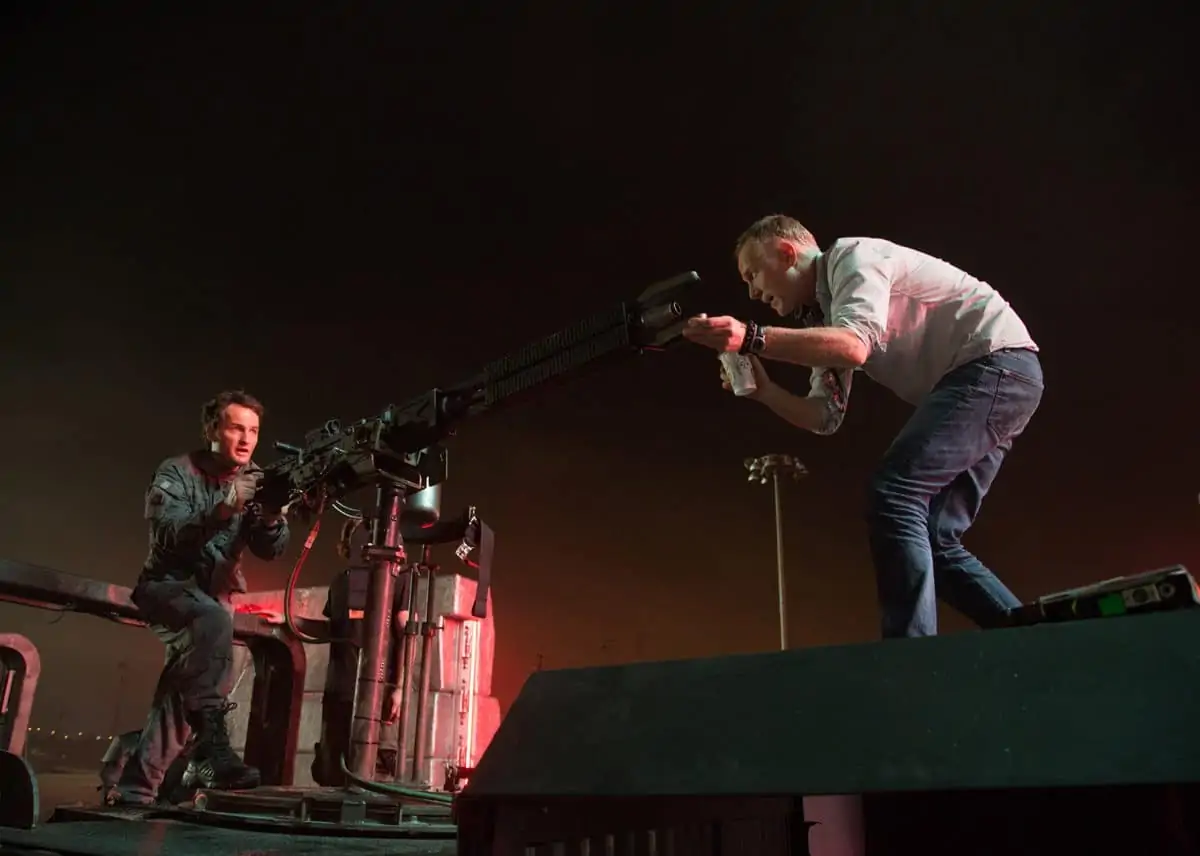
How involved were you with the previz on the movie?
KM: I had three months prep on Terminator Genisys, and along with the crewing, technical and recce-ing aspects, I was very closely involved in the previz, together with other heads of department and the director. Whilst previz is still fairly primitive, and some of the CG-developed camera moves, angles and lens combinations cannot always be physically reproduced on-set, it’s a good template to work from and helps a tremendous amount when you are in production.
What was your camera movement strategy?
KM: Alan is a very classical filmmaker and is not inclined to move the camera unless there’s genuine motivation for it. That said, with the flow of adrenaline and action in the movie, the camera had to move a lot. We choreographed the vast majority of the camera movements using the A-camera in a Libra head on a Moviebird with a 30ft telescopic arm. Alan and I used this same, simple set-up successfully on Thor 2, and knew exactly how nimble and creative we could be with it coming into Terminator Genisys. The movie has some dolly moves, and the Steadicam and handheld were reserved for specific action moments. But there’s nothing gratuitous about the way we moved the camera in Terminator Genisys.
Who were your crew?
KM: I had two top-notch, super-experienced operators in the forms of Mitch Dubin on A-camera and George Billenger on B-camera/Steadicam. My focus puller, Richie Masino, is a great guy to be with for seven months. While Steve Mathis was my wfirst-time gaffer, he has some massive VFX pictures to his credit and proved wonderfully resourceful. Key grip, Chuck Crivier, is a good friend and very good at his job. The DPs on second unit, Alexander Witt and Larry Blanford, were excellent and delivered pictures in keeping with my creative intent. Ryan Kunkleman, my DIT, set up an on-set/dailies workflow that helped me to stamp the look on the images at the very start of the production.
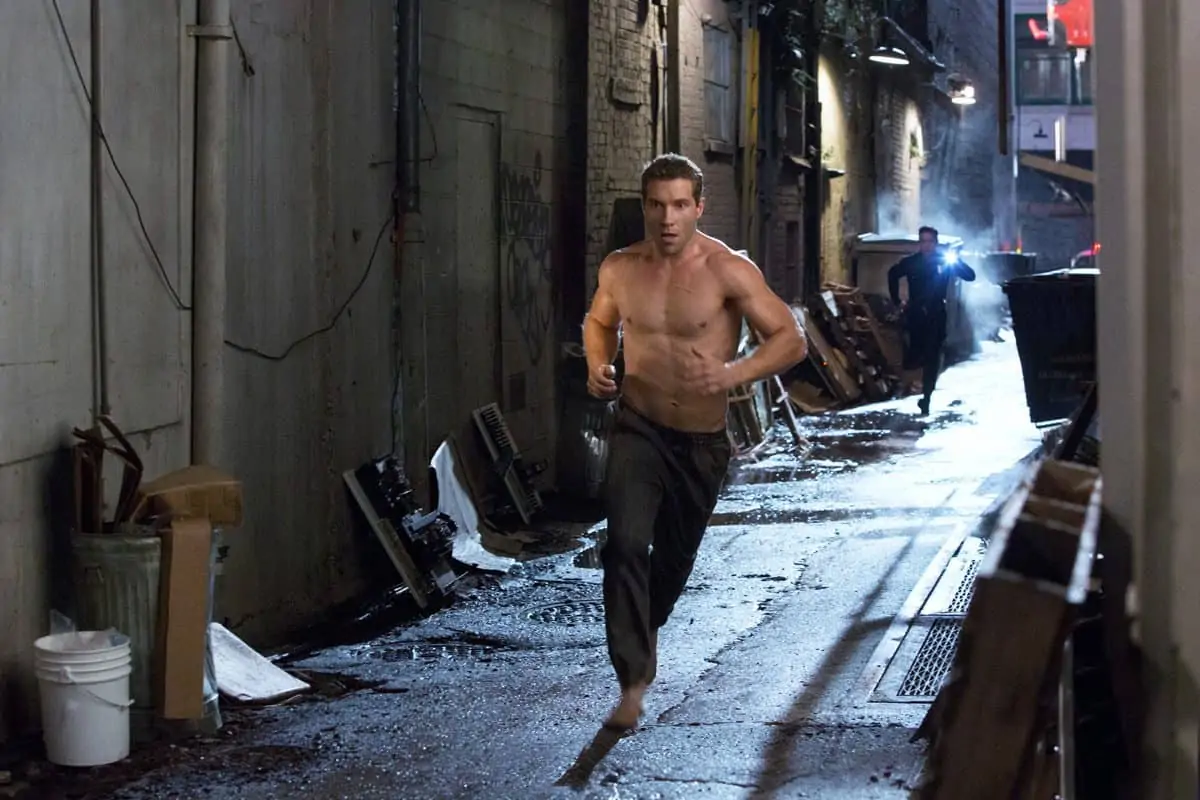
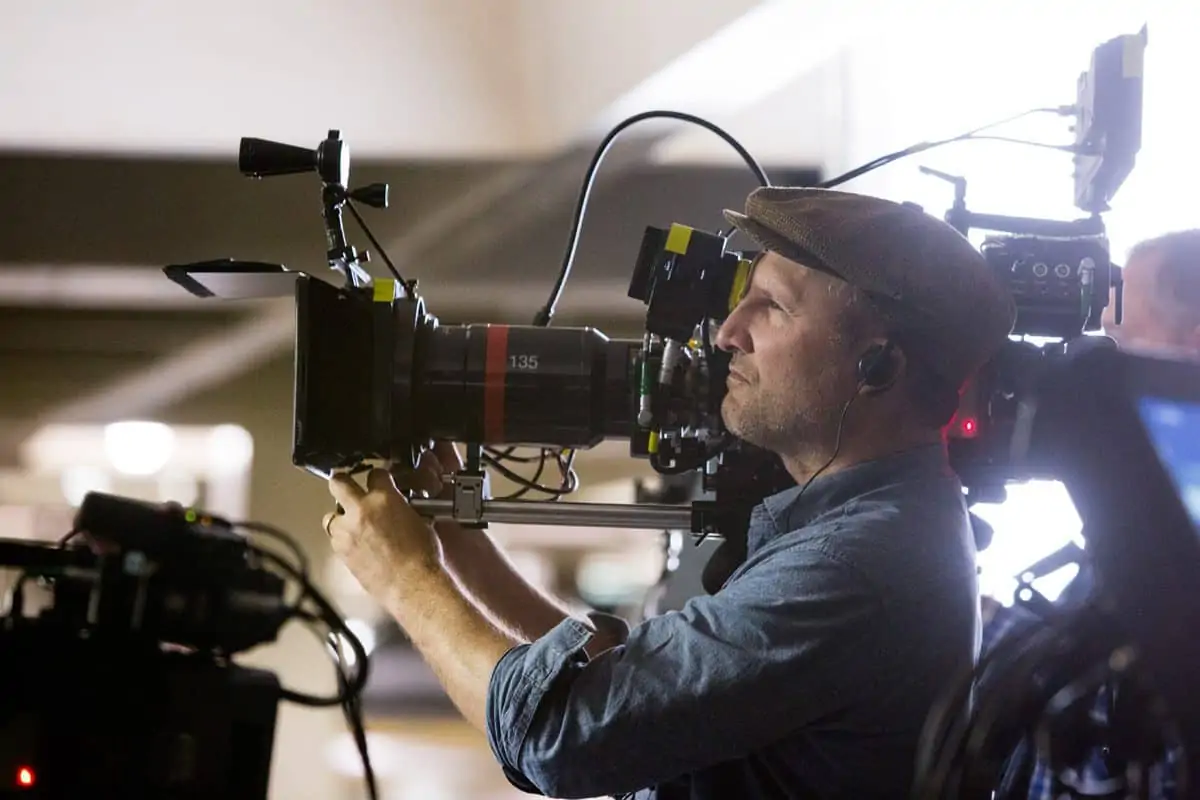
What did you learn from the experience?
KM: On a movie like Terminator Genisys, where there are lots of VFX, you are constantly learning new ways to integrate your work with the post teams, but you also have to protect your vision and maintain the way you want the show to look. In this day and age, the image is a malleable thing that can be changed at many different stages of the post process. So establishing a workflow that helps you to stamp the identity on your pictures from the start is a great help. The cinematographer must remain relevant in the pixel space as well as on-set. So you need to be around in the various post rooms, to see how the movie is coming together, and to maintain the respect of the producer, director and VFX supervisor to preserve your vision.
And finally… what was it like working with Arnie?
KM: Arnie is a great guy – fun and charismatic. You can easily see why he was the Governor of California, and why has enjoyed such a long and successful career in the movies. The Terminator franchise is very dear to him. Thanks to him and Alan, working on this production proved a happy and rewarding experience.
